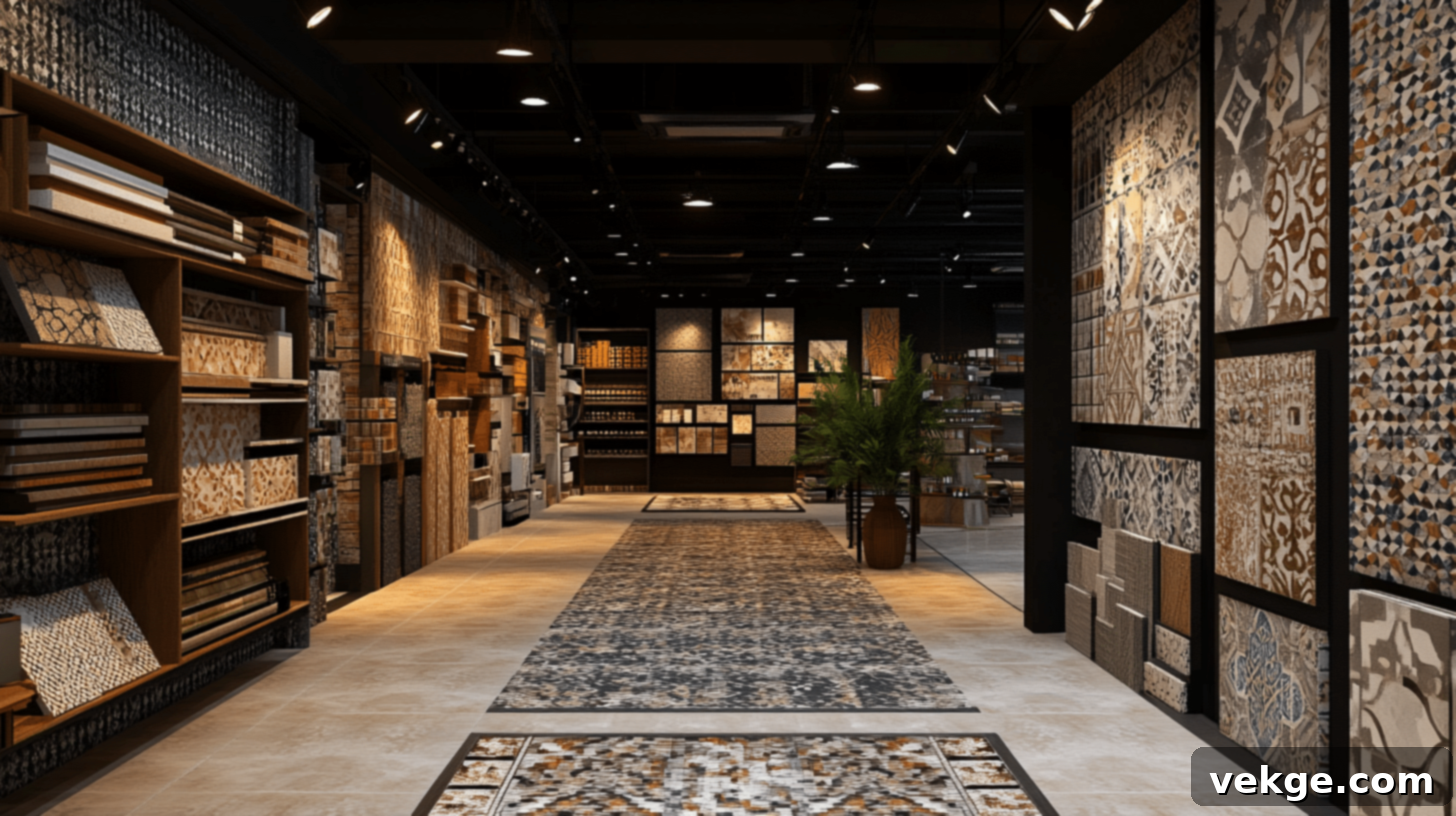Enhancing Sales Through Effective Product Presentation in Home Decor
Every aspect of the ever-evolving and competitive home decor segment is crucial for the industry’s success, especially in a cutthroat business environment. Every participant in this sector, particularly those involved with display tiles, bathrooms, and various building materials, must execute their strategies flawlessly.
The key difference between a thriving business and one that struggles often boils down to one critical factor: product presentation. Most distributors recognize the immense importance of showcasing their products effectively. The ability to present products well distinguishes the best from the rest, highlighting the expertise of professionals in the field.
This article will explore the significance and science behind shop interior design and product presentation, demonstrating that it’s not merely about displaying products; it’s about showcasing them in a way that directly addresses potential customers’ needs and desires.
The Importance of Product Presentation

The way a product is presented can significantly influence sales outcomes. Effective presentation goes beyond simply stacking products on shelves; it’s about creating an engaging experience for clients that resonates with them and influences their purchasing decisions. Ultimately, it all comes down to psychology and how you navigate that landscape.
Understanding Visual Setup
Visual merchandising, or visual setup, is both an art and a science, deeply rooted in customer psychology. It is essential to create an environment that facilitates decision-making for customers, supported by these four fundamental elements:
- Color Psychology: Strategically arrange products by color to create an orderly appearance that aligns well.
- The Rule of Three: The human brain processes information best in groups of three. Arranging products in triads enhances their appeal.
- Display at Eye Level: Products placed at eye level tend to sell better. This principle is particularly effective in showroom layouts, ensuring that key products are positioned optimally.
- The Importance of Feel and Touch: Allowing customers to interact with materials can lead to better purchasing decisions.
Influencing Customer Decision-Making Through Presentation
Your store’s presentation and display significantly impact sales and the conversion of visitors into customers. Here are some key ways effective presentation influences customer behavior:
- Establishing Context: Customers are more inclined to purchase when they can envision products in a setting similar to their own homes. Room vignettes or lifestyle exhibits help bridge the gap between imagination and reality.
- Providing Variety: While variety is essential, offering too many choices can overwhelm consumers. Carefully curated selections and groupings can simplify decision-making.
- Building Value: High-quality presentation can elevate a product’s perceived value. Even mid-range tiles can appear luxurious when displayed attractively.
- Emotional Connection: A presentation that engages customers emotionally or tells a story can strengthen their connection to the product, increasing the likelihood of a sale.
By understanding the psychology behind effective displays, businesses can significantly enhance their sales potential. The approach taken can make all the difference, showcasing the vital role professionals play in this process.
The Role of Professionals in Product Exhibition

Recognizing the importance of proper exhibitions leads us to understand the role of professionals in enhancing overall strategy. Expert involvement can elevate the exhibition strategy, ultimately impacting sales outcomes.
Professionals bring specialized knowledge and skills that can transform your product display from ordinary to extraordinary. Companies like INSCA assist businesses in transitioning from conventional design approaches to well-planned and strategic presentations.
Their primary goal is to create impactful displays that showcase the best products in a short time. They focus on innovating, designing, and generating experiences that highlight the best collections in the tiles, bathroom, and building sectors.
We help our clients advance with our exhibition solutions because we believe there is only one way to grow: “Show the best of yourself; show your best.”
Key Elements of Effective Exhibition Design
To portray an exhibition in the best possible manner, three essential elements must be considered. These components work together to provide optimal outcomes for the business:
1. Interior Designing
Interior designers play a crucial role in setting the foundation for how everything looks. They craft showroom experiences that resonate with customers:
- Strategized Planning: Layouts must be optimized for functionality and flow, ensuring displays are easy for customers to navigate.
- Color Coordination: Designers utilize complementary color palettes to draw attention to products and create inviting environments.
- Integration with Trends: They present items in innovative, aspirational settings, informed by current design trends.
2. Lighting
Proper lighting is essential for any display. Lighting can dramatically enhance the perception and appeal of products:
- Product-Specific Lighting: Experts understand how light interacts with different elements, ensuring each product is well-lit to showcase its best features.
- Mood Creation: Layered lighting techniques can create various atmospheres in the showroom, from vibrant and bright to cozy and intimate.
- Energy Efficiency: Incorporating energy-efficient lighting solutions saves operational costs while enhancing product presentation.
- Adaptability: Lighting systems can be designed to be flexible and easy to update as product displays change.
3. Integrating Technology
In today’s digital age, a strong online presence is vital. Beyond in-store design, having a robust online presence is equally crucial to attract virtual customers:
- Interactive Displays: Touchscreen catalogs allow clients to explore your entire product line, even in limited physical spaces.
- Virtual and Augmented Reality: Experts can set up VR or AR stations, enabling consumers to visualize products in their homes.
- Data Collection: Implementing systems to monitor customer interactions provides valuable insights for future improvements.
- Online-Offline Integration: Technology architects can create seamless experiences that connect your online and offline showrooms.
Elevate Your Exhibition: A Key to Maximizing Sales
Creating an effective display of construction-related products should resonate with your customers’ needs. By hiring a professional to design your interior, you not only enhance your store’s appearance but also drive overall sales by facilitating clearer customer decision-making.
It’s crucial to remember that the goal is not just to showcase products but to present them in a manner that communicates your customers’ needs and desires. Ultimately, in the home decor and construction industry, it’s not only what you present but how you present it that matters.
